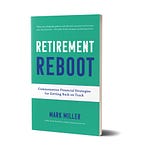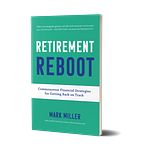
On this week’s podcast, we consider the impact on older workers of the extraordinary coronavirus-induced shutdown of the U.S. economy. Of course, workers of all ages are impacted by the stunning loss of jobs, but some special problems apply to people over age 50.
My guest this week is labor economist Teresa Ghilarducci. Teresa is a professor at the New School for Social Research in New York, where she directs the school’s Schwartz Center for Economic Policy Analysis, and its Retirement Equity Lab (ReLab).
She also blogs for Forbes.com, where she recently posted a piece with this provocative headline -Useless Retirement Advice And Bad Government Policy In The Time Of COVID-19.
I talked with Teresa about what the numbers on older workers in this pandemic economy are looking like so far. We also discussed the impact of the economic and market crashes on retirement savings, home equity and health care spending - and the special risks older workers who are still on the job are facing during the pandemic.
Listen to the podcast by clicking the player icon above. The podcast also can be found on Apple Podcasts, Spotify and Stitcher.
Social Security is posting COVID-10 updates
The Social Security Administratino has a COVID-19 alert page that it is updating regularly. You can sign up for updates by email. This week, the SSA posted a couple updates on Medicare enrollment and other adjustments the agency is making during the crisis.


Biden proposes reducing Medicare’s eligibility age to 60

Joe Biden proposed lowering the Medicare eligibility age to 60 this week as he moves to unify the Sanders wing of the Democratic party with more moderate elements. If you have employer coverage and want to keep it, you can do so - or move to Medicare. In other words, the same option we have now for the 65+ population. This is an interesting, positive move on Biden’s part but it doesn’t go far enough, as I explain below. So, I’d say it likely is just an opening bid.
As the COVID-19 health insurance situation evolves, one lesson people are learning rapidly is that we need much more aggressive expansion of health care and insurance in the United States. That has been clear for years, but the crisis is putting a harsh spotlight on the gaps and failings of our current system.
Last month, the National Academy of Social Insurance (NASI) released a study of various ways to extending Medicare eligibility beyond the current 65+ population. The report was created by a Study Panel on Medicare Eligibility made up of 27 experts from a broad range of perspectives, such as economics, health policy, political science, sociology, medicine, and law, as well as people with direct experience working in areas related to public and private health insurance, including actuaries, health plan administrators, health care providers, labor representatives, and government regulators.
The report examines three approaches to changing Medicare eligibility: lowering the eligibility age, establishing Medicare-for-all, and creating a Medicare buy-in. Here’s the upshot:
Medicare for All is the most comprehensive solution, but the heaviest political lift to achieve in a single sweeping reform.
The Medicare buy-in concept sounded great rolling off the tongues of moderate presidential candidates like Pete Buttigieg (“Medicare for all who want it” - what’s not to like about that?). But it actually is the most complicated and problematic option.
Lowering the Medicare age might just be the sweet spot. It can be done incrementally and it’s fairly straightforward. The only real problem is protecting the Part A trust fund, which Biden proposes to do by financing costs from younger enrollees from general revenue, rather than the payroll tax.
But in order to get the biggest gain in health care coverage, the age would need to move much lower than 60. Here’s what NASI found:

Notice how many more people join Medicare if you drop the age to 50? Doing this gets millions of people who now must turn to employer coverage or the Obamacare exchanges for insurance. The latter can be problematic for people with serious health needs - premiums can be very high if you don’t qualify for the tax subsidies, and deductibles often are high, too.
So - dropping the age to 60 is a decent start. Perhaps an incremental approach would work here - 60 in year one, 50 in year two, 30 in year three - and then it’s everyone in the pool.
Here’s more detail on the NASI lower-the-age plan. And the full report is here.
Here’s Biden’s statement.
Subscribe to the newsletter
If you haven’t subscribed to the newsletter, give it a try if your finances permit in this tough economy. You’ll be supporting independent journalism dedicated to covering what matters for older Americans. Subscriptions cost $5 per month or $60 year, and you can cancel at any time.
If not, no worries - I’m committed to providing everything I’ve got on the coronavirus crisis in the free edition for as long as it takes.












